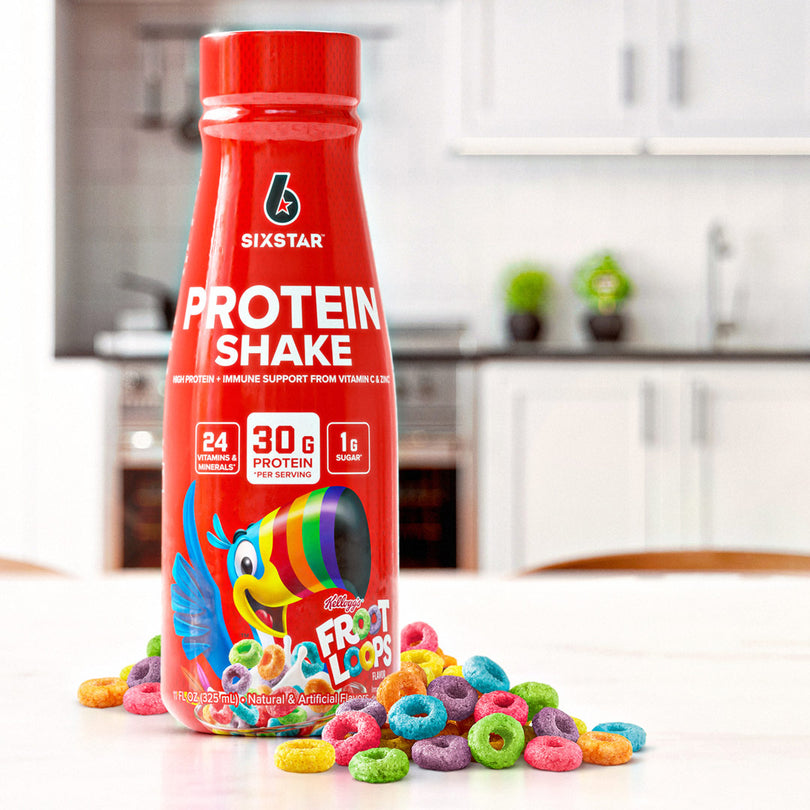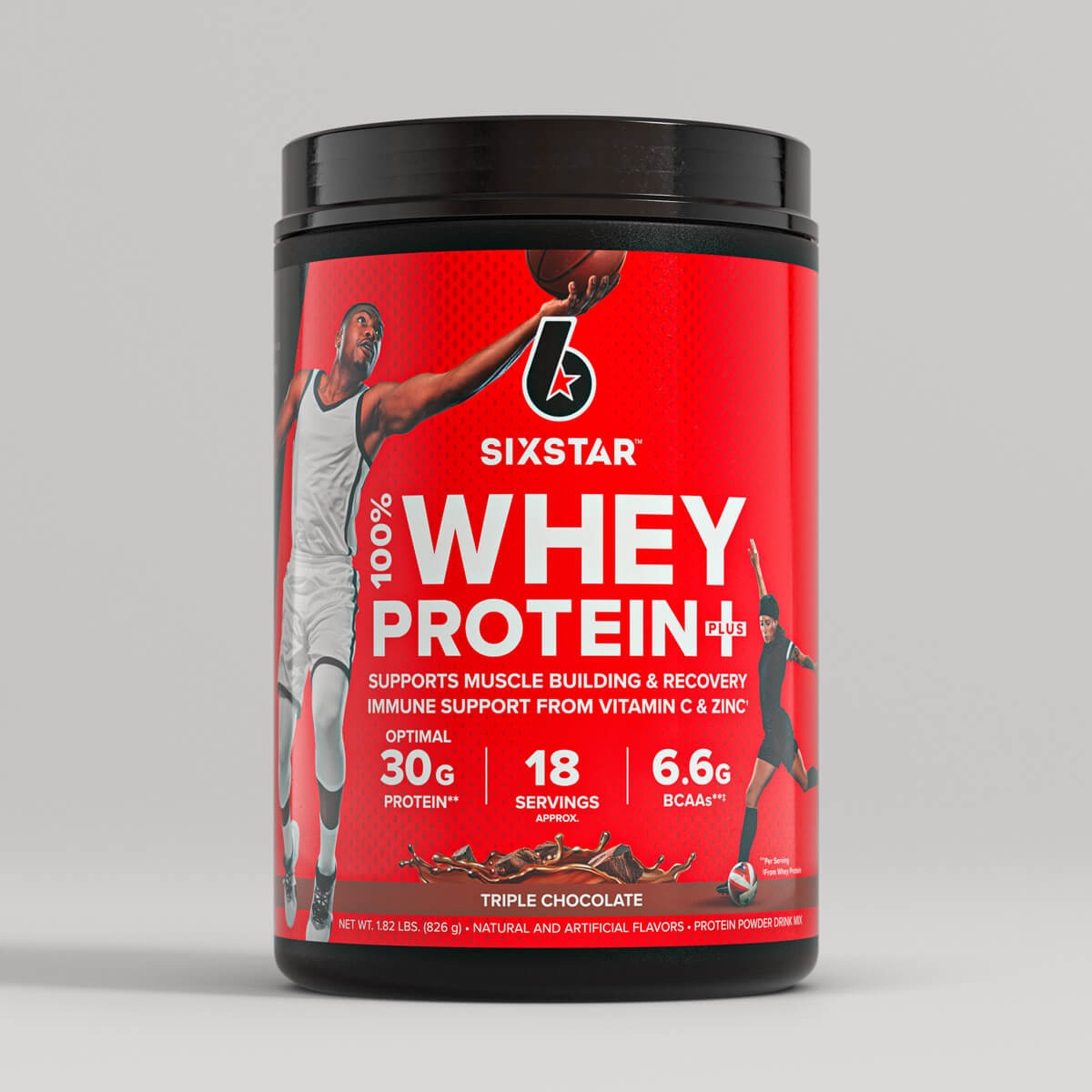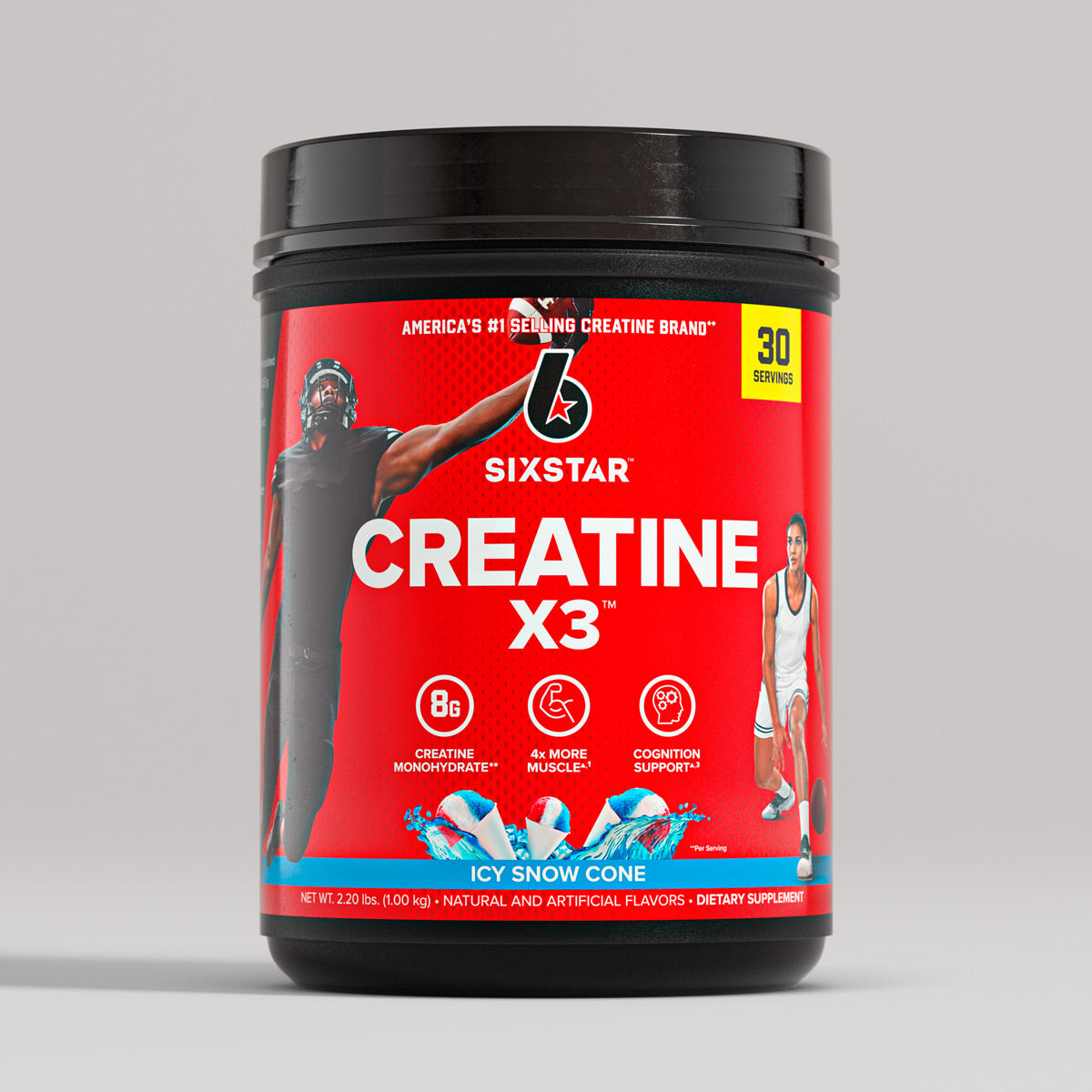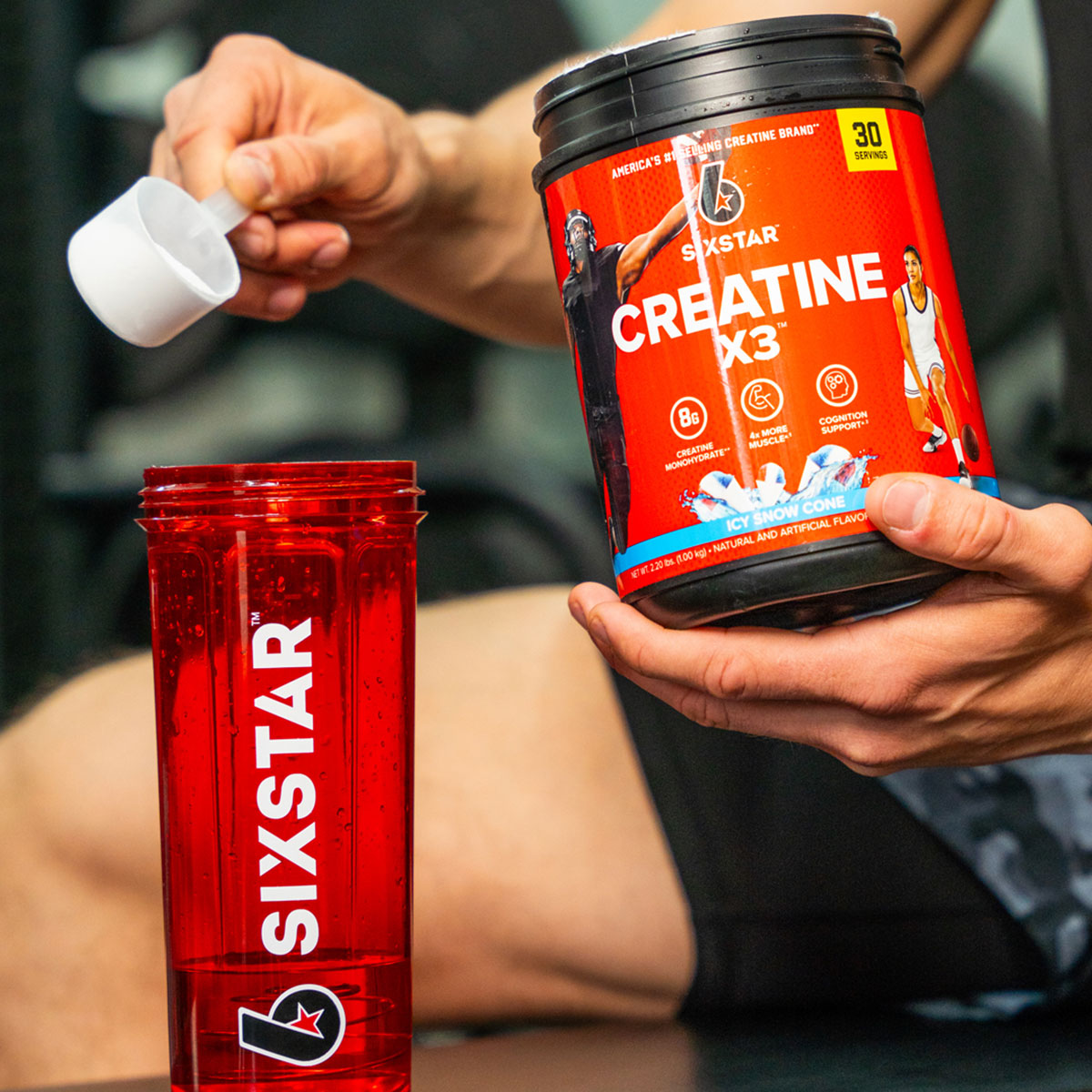Athletes are always looking for an edge over their competition. That’s why elite athletes are willing to put the time in at the gym in order to enhance their strength, speed, and stamina. However, if an athlete’s nutrition isn’t optimized, then the athlete isn’t going to get the most out of the work that he or she is doing.
Research on student athletes’ diets revealed that they often fall short of their nutrient needs. The research shows that female athletes have been shown to be deficient in calories, carbohydrates, folate, calcium, magnesium, and iron, while male athletes have significant deficiencies in vitamins A, C, and D, folate, calcium, potassium, and magnesium.
Why is this happening to student-athletes?
Well, one study revealed that the five most significant barriers when it comes to student athletes consuming a healthy diet in college are: A lack of time, easy access to unhealthy foods, a lack of knowledge about what foods are healthy, the cost of healthy foods, and a lack of knowledge and skills to cook healthy foods.
So, if you’re an athlete who really wants to set yourself apart from your opponents this year, it’s time to start stepping up your nutrition game and cooking at home.
Ways Athletes Can Tell If Their Diets Are Lacking
For athletes who are wondering if their diets are lacking, some signs that their diets may be inadequate include all-day fatigue, ongoing weight loss, and experiencing sports performance plateaus.
While some fatigue is expected after practices and games, if it’s lasting all day and affecting an athlete’s performance on the field, as well as in the classroom, then that athlete’s diet may be the reason. Therefore, it might be time for that athlete to make a diet change and start cooking at home. The same goes for athletes who may be experiencing sports performance plateaus, as well as any ongoing weight loss.
Sure, it’s completely normal for athletes to experience some ups and downs when it comes to performance throughout the season, as well as some slight changes in weight. However, for athletes who are working hard and that hard work isn’t translating, or if they’re losing more weight than they want to be, improving the quality and the amount of nutrients that they eat may help enhance their performance and allow them to maintain a stable weight.
An irregular menstrual cycle may also be a sign of an inadequate diet. When female athletes who typically have regular periods suddenly start having very light periods, no periods, or skip months, this is a common sign of calorie deficiency and hormonal imbalance, which can put female athletes at a high risk for a stress fracture.
Benefits of Cooking at Home Instead of Eating Out
1. It Can Lead To A Healthier Diet
A study concluded that cooking at home is associated with consumption of a healthier diet. This makes a lot of sense since studies have shown that restaurant meals typically contain higher amounts of sodium, saturated fat, total fat, and overall calories than home-cooked meals.
2. Athletes Can Better Monitor The Amount Of Calories That They’re Consuming
By cooking for yourself, you have control over all of the ingredients that are going into your food. You can also make sure that the portion sizes and calorie counts are where you want them to be for optimal athletic performance. On the other hand, when you eat fast food, the average order ranges between 1,100 to 1,200 total calories.
3. Home-Cooked Meals Have More Of The Nutrients That Athletes Need
Home-cooked meals have been shown to be higher in many of the key nutrients needed in an athlete’s diet, including fiber, calcium, folate, iron, and vitamins B6 and B12, vitamin C, and vitamin E.
Overcoming The 5 Most Common Obstacles To Cooking At Home For Student Athletes
1. A Lack of Time
From the time a student-athlete wakes up in the morning until the time a student-athlete goes to bed at night, almost every minute of that athlete’s day is preplanned. Since most athletes have a set block of time to eat dinner, cooking at home may actually be quicker and more efficient than ordering take-out since athletes run the risk of their take-out order not arriving at their home on time, or it not being ready when they go to pick it up.
By meal prepping for the week, athletes will be able to eat their meals exactly when it’s time to eat – no waiting involved! Athletes can also use time-saving tricks such as buying pre-cut produce, using a slow cooker, or doubling recipes in order to make sure that they have leftovers to freeze. Athletes can also grocery shop online and have their food delivered to save time, as well.
2. Easy Access to Unhealthy Foods
It’s true – healthy food options are extremely limited when athletes are traveling or when they’re competing at all day tournaments. In these situations, athletes usually have to grab a quick take-out meal, or eat whatever is available at the concession stand.
While athletes most definitely need enough energy to perform at a high level, not all macronutrients are created equally. For example, a cheeseburger contains fats, proteins, and carbohydrates, but the fuel it provides athletes is low quality. Without adequate calories from the healthiest food sources, athletes will struggle to achieve their performance goals.
That’s why athletes should bring energy-packed foods on road trips or to tournaments instead of relying on fast food restaurants or concession stands. This way athletes will get the proper nutrition that their bodies need to perform at a high level.
3. Understanding The Healthiest Food Sources
Athletes are more likely to be tired and perform poorly when they do not get enough calories, carbohydrates, fluids, iron, vitamins, and other minerals, and proteins. That’s why it’s so important for athletes to make sure that they’re getting enough macronutrients – carbohydrates, proteins, and healthy fats – in their diets.
Carbohydrates are needed to provide athletes energy, especially during high intensity and long duration exercise. Protein provides the body with the necessary amino acids to help build and repair muscles. Plus, protein can also be used by the body for energy after carbohydrate stores have been used up. And healthy fats are essential in an athlete’s diet in order to maintain bodily processes like hormone metabolism and neurotransmitter function.
When it comes to planning and preparing a home-cooked, nutritious meal, it’s important for athletes to make sure that they’re getting adequate calories from the healthiest food sources possible. So, here are some of the best carbohydrates, proteins, and healthy fats for athletes to consume.
Healthy Carbohydrates
- Whole-grain bread
- Oatmeal
- High-fiber, non-sugary cereals
- Brown rice
- Fruit
- Starchy vegetables such as potatoes or sweet potatoes
- Non-starchy vegetables like broccoli and leafy greens
Healthy Proteins
- Eggs
- Greek yogurt
- Milk
- Lean meat and poultry
- Fish and seafood
- Beans
- String cheese
- Soy
- Hummus
Healthy Fats
- Avocado
- Peanut butter
- Oily fish
- Nuts
- Seeds
- Olive oil
While the type of sport, the type of training, and the amount of time that athletes spend doing physical activity or exercise will dictate the amount of each food group that individual athletes require – all athletes need an appropriate amount of carbohydrates, high protein foods, and healthy fats in their diet. And keep in mind that adequate hydration is another key element in sports performance.
It's also important to note that just because athletes are cooking at home, that doesn’t mean that they’re actually eating healthier. Athletes need to be mindful about the foods that they’re cooking and consuming, as well. In fact, Americans are cooking slightly more than they were a decade ago, but research has shown that as much as almost 60% of total calories are coming from ultra-processed foods.
4. The Cost Of Healthy Foods
There’s no denying that healthier diets that are rich in fresh produce and lean proteins generally do cost more money. The researchers who conducted the processed-food study even noted that the unprocessed diet that they fed participants cost 40% more than the ultra-processed diet.
One way to get around the higher cost of healthier foods is to buy in bulk and have teammates chip in with the grocery bill. Also, a group of basic ingredients are often less expensive than a single dish at a restaurant. So, over time, athletes may start to see savings from cooking at home versus eating out, especially if everyone chips in for healthy team meals.
5. How To Quickly Improve Your Cooking Skills
Four ways to quickly improve your cooking skills are to use the correct equipment, get to know your ingredients, learn basic cooking techniques, and practice the same way that you do on the field or court.
Essential Tools For An Athlete’s Kitchen
- Stainless steel skillet
- Sharp cutting knives – one large, one small, one serrated
- Cutting board
- A large, heavy pot
- A large spoon
- Measuring spoons
- Measuring cups
- Small, medium, and large mixing bowls
- A microwave safe container
- Sheet tray
- Peeler
- Can opener
Once you have the essential tools for an athlete’s kitchen, start cooking up a storm. And don’t worry if you make mistakes at first. That’s part of the game. Just learn from them and move on. After all, practice makes perfect!
Buy Sports Nutrition & Supplements from SixStar
Read Our Top Read Blogs:
- What is Bulking Season and when does it Start?
- The Ultimate Workout Program to be an All-Round Athlete
- When to Take to Take BCAA? Maximizing Your Workouts, Enhancing Your Health
- Diet For Soccer Players: What, Why & When?
- 10 Self Care Ideas that Don't Cost Money































